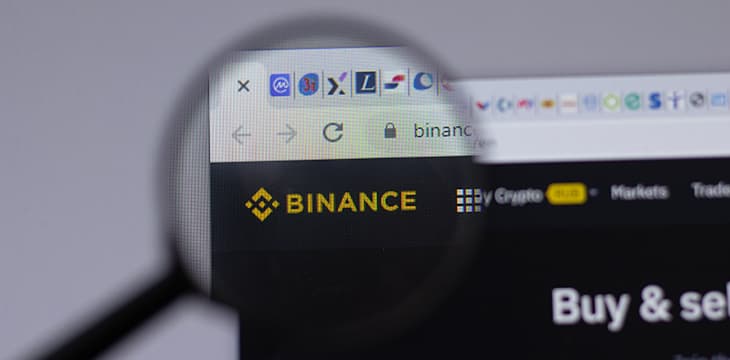What did Binance do with Bitcoin assets left in customer accounts after it delisted BSV in 2019? Following a handful of messages posted online recently, we wondered if the company had liquidated and returned—or simply kept—the money.
Our curiosity arose after seeing the following messages posted on Twitter and Reddit:
It appears that Binance‘s standard response to customer enquiries about their missing funds is a link to the April 2019 announcement—or, in other words, tough luck.
While acknowledging that Binance did publicly announce their decision to delist BSV in April 2019 and end support for withdrawals a few months later, we sent a request to the company’s media enquiries desk with the following questions:
– Were a number of Bitcoin SV units left un-withdrawn after the 2019 deadline?
– What did Binance do with the remaining BSV assets, e.g. were they sold for others, such as BTC, or do they remain in cold storage in Binance’s records?
Almost a week has passed since we asked those questions, and Binance has not provided answers… or any response at all. This, and the reported answers the customers above received, suggest Binance doesn’t feel it needs to offer any further explanation on the matter.
Only a few months passed in 2019 between Binance’s announcement that it planned to delist BSV, and end withdrawals. There has been little or no mention of BSV on the company’s Twitter support account, or its blog, since then. It’s entirely possible that many BSV-holding customers missed the announcements, and left non-trivial amounts of BSV units in their Binance wallets.
If anyone has any further information on this, we’d be happy to hear it.
Kraken, which joined Binance in delisting BSV, gave its customers a month to withdraw BSV before eventually “liquidating” it and converting to BTC at average market prices 6 months later… with an arbitrary 10% fee:
Again, this response amounts to a “tough luck, you lost” statement—since the “reality” Kraken’s representative referred to was created by the company’s own decision.
‘Delist BSV’ campaign revealed truths about how the digital asset industry operates
The “delist BSV” campaign failed in its main goal to remove BSV from the digital asset map altogether—too many exchanges realized it remained too popular to ignore, and were happy to pick up the extra business the delisters didn’t want.
It’s probably true that limited trading options on popular platforms, together with an (often hilarious) aversion to reporting on BSV in industry media, has suppressed the BSV unit price over the past two years. Whether a lack of short-term gains has improved or hampered BSV’s long-term growth is still a matter for debate. But BSV hasn’t disappeared either; in fact, its ecosystem has continued to grow with a variety of services and innovative ideas other blockchains haven’t seen in years.
Its survival has prompted others to take a second look. Some people who take a more analytical approach to digital asset investments have questioned why exchanges would deliberately delist an asset that was (at the time) in the top 10 by market cap. Such a move would obviously hurt an exchange’s bottom line, and runs counter to their constant push for open and free markets, based on individual choice. There have been no security issues with the BSV network, and the technology has functioned exactly as promised.
The only notable BSV coin losses have been from accounts on the exchanges who chose to delist it.
Therefore, the decision to delist and the attempt to delegitimize BSV was clearly a political one. Many of those involved in the digital asset space arrived there due to a mistrust or lack of confidence in existing financial/political systems, and the opacity that blankets any collusion between the two. To see digital asset exchanges and industry media engaging in similar behavior caused them instead to take another look at BSV.
For all its pretensions to freedom and noble underdog status, the blockchain industry has proven itself just as capable of manipulation and backroom deals that benefit allies as the groups it seeks to topple. Just as history’s revolutionaries have championed human rights and free speech, then later restricted both once they gained a little power, it’s another case of “meet the new boss, same as the old boss.”
Exchanges are the companies that have made the most money from the digital asset boom and bust cycle over the past decade. They now pay only token lip-service to the ideals they originally marketed, after the billions started rolling in. Their leaders cry in protest if individuals like Dr. Wright dare to use the court system to correct the record, yet are comfortable leaving their own clientele suffering financial losses, with no answers or options for recourse in a dispute.
These actions, and the fact that BSV has proven itself to work exactly as promised, are the reasons “delist BSV” didn’t make the original Bitcoin disappear. Instead, its continued survival has led serious builders to examine it (and the exchange’s behavior) more closely.
Follow CoinGeek’s Crypto Crime Cartel series, which delves into the stream of groups—from BitMEX to Binance, Bitcoin.com, Blockstream, ShapeShift, Coinbase, Ripple and Ethereum—who have co-opted the digital asset revolution and turned the industry into a minefield for naïve (and even experienced) players in the market.
Source: Read Full Article
